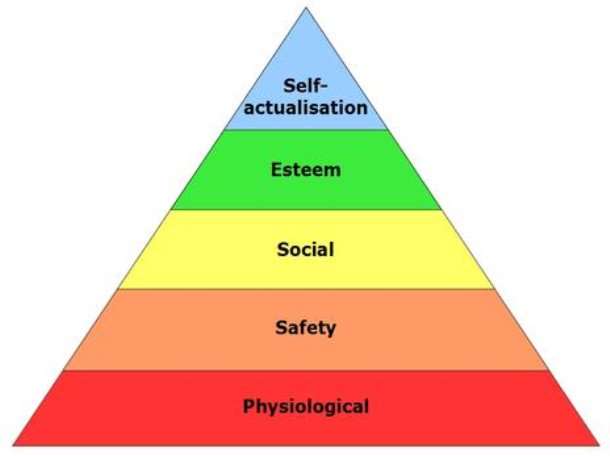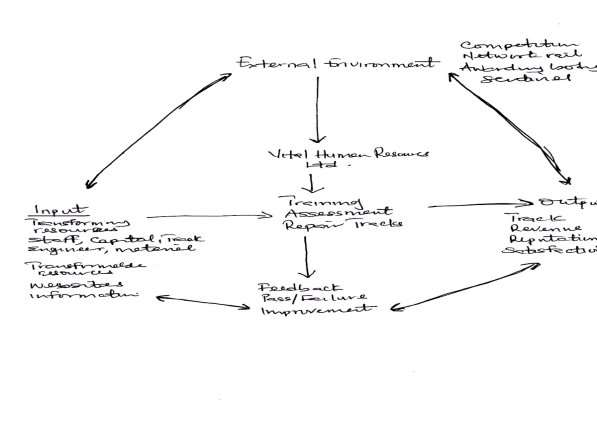VHRL Operation Management Case Study
 MOSHOOD FASHOLA                        20060932             UNIT 1 ASSIGNMENT 2                    06/01/2017
“Operation Management is the activity of managing the resources which are devoted to the production and delivery of products and services”. The goods are physical material and the service is the output of the product being produced and delivered to market for sale. [Slack et al 2000, p.4]
The key operation of vital human resources limited [VHRL] is the operations manager who is responsible for day to day activities of the company. The operations manager is the core function of the company including planning and controlling the operation of the business and monitor the employee’s activity in achieving company objective. There are four major function in VHRL such as marketing, finance, operation and human resource manager. However, not every company will use the same key function of operation in an organisation because line of production maybe different to each other.
The finance manager is responsible for managing the financial aspect of the VHRL which include processing of timesheet and purchase order, cashflow and capital investment, the budget planner for all section and ensure overhead cost is reduced to bare minimum. The VHRL company account must be carried out to show if the company make loss or profit.
The marketing manager in VHRL is responsible for the sales product of the company understand customer needs and gives rational sales for the business and understand customers demand. The marketing manager oversees the budget for the marketing department and monitor the progress of effective marketing communication including marketing campaign, activities within marketing department, the launch of new product to client and work in line with the company objectives.
The operation manager VHRL is responsible for controlling, planning, organising and leading the operation of the company and the resources that produce the goods and services. Operation manager is the backbone of every organisation because its involves managing people, information, monitor the company activities and other resources. Also, other functions of the section are there to support operation manager and ensure the transformation of input to output.
Human resources manager VHRL is responsible for the process of recruiting good staff, training and development of staff, performance appraisal, deals with employee complaint and feedback and identifying the needs of staff, welfare and working condition of staff are well taking care off.
There are different operational approaches to operational management and their value namely classical approach, human relations approach, system approach and contingency approach.
The classical approach believed in autocratic management style and the approach lay emphasis on purpose and planning of work in an organisation, formal structure and assumption of rational and logical behaviour and hierarchy of management. This type of approach gave an insight to division of work and tend to neglect the interrelationship between an individual and focus more on work. The drawback for classical approach lack free communication, ignore the human behaviour relation and lack of flexibility. It is common to all managers using autocratic style of managing organisation by delegating work to the employee, gives instruction, create solution to problem without consulting anyone and make decision on their own. This managerial style decreases motivation to the employee and hinders the communication between managers and their subordinates. For example, whenever there is a possession of a track everything needed are made available such as road rail vehicle, tools, resources and all necessary paperwork. Then allocate manpower for the job and monitor the progress of the job which is very important and if there is going to be any movement on site the engineering supervisor ensure everyone is contacted to stop whatever they are doing and let them know there is going to be a movement of trains and contact them when movement is completed so that they can return to their various post.
As research suggest that human relation approach which focuses on studying the social factor at work and behaviour of employee within an organisation. It also studies the motivation, supervision and intergroup behaviour. The approach is used in managing people to get things done. “Elton mayo carried out a research on Hawthorne studies on the western electrical company in the US between [1924-1932] to investigate if different lighting affect worker’s productivity. The study shows that workers productivity increased when lighting was decreased“.[www.library.hbs.edu]
“Also, Abraham Maslow the hierarchy of needs which contributed to human relation approach in term of hierarchy of needs“.[www.bbc.com]

System approach deals with the interrelation and interdependent parts coming together to achieve a goal and environmental as whole.
Every company as a system in which they follow and system approach reconcile the first two approaches by focusing on the companies work and interrelationship between structure and behaviour within an organisation. However, system approach let manager view organisation as a transformation process through input- transformation process- output and covers the environmental factorThe operation of the organisation.
                                               VHRL TRANSFORMATION PROCESS

One of the strengths of system approach is to ensure the manager do not analyse problem in isolation and its facilitates the relationship between organisation and environment. The drawback is that the system does not recognise difference in system and cannot be applied to practical problem.
Contingency approach lay emphasis on analysing managers approach to the specific organisation with the external environment and a good structure in place to fit into the requirement of the current situation. However, the emphasis on contingency approach is the need to adopt organisation demand in changing technology, innovation and decision making. “The theories suggest that there is no best way to tackle any managerial problem and no best organisational structure to fit any organisation situation”.
Research suggest that classical approach which adopts the managerial style of management from top level management through to lower level management. The employee task is overseen by supervisor and the supervisor report to manager. The company does not consider the personality factor, form of organisational structure which limited the relationship between employee and company. The drawback of the classical approach never considered the employee relation and tend to focus more on the organisational structure. However, the human relation approach which focuses on the individual in a workplace than the rule and regulations of the organisation. This approach enable free communication between manager and employee to talk to each other exposing them to decision making. The approach embedded the Maslow hierarchy of needs into management which lay emphasis on phycological and social factor and concerned about an employee without organisation. The strength of the approach is that it gives employee a chance to interact with the manager which in other word increase the productivity of the company and employee feel more valued and treat them fairly. The weakness of the approach is that it ignores the responsibility of employee towards the organisation in term of social factor. In contrast the system approach focus on organisational structure and human relation working together to achieve one common goal and interact with its environment and the approach uses the transformation process example of this system is VHRL. The strength of the approach is that it uses both organisation and human relation approach to achieve better goal and increase in productivity and not isolating its environment. However, the contingency approach insists that there is no one best way to structure or manage organisation rather provide in full detail the situational factor that influences management decision making.
The impact of external business environment factors that affect the decision making by leaders and managers are ethics, values, corporate social responsibility, culture and sustainability.
The leaders and managers are responsible for upholding the ethical code in VHRL. The managers hold positions of authority to ensure they are accountable for the ethical code ensuring the employees report to them on all activities and make employees aware of the company ethical code and monitor the behaviour of the employee towards company’s expectation. The manager has a duty of authority to decide if any of the ethical code is violated either internally or externally so that the impact will be minimised. In addition, leaders and managers are obliged to follow the company ethical code in a separate way by interacting with external stakeholders and sometime a manager can be called to give an insight into the decision-making process in term of ethical considerations.
However, leaders and manager also responsible to the core values of VHRL. The core value of VHRL is profit, safety, integrity, delivery, innovation, knowledge and charitable. VHRL works on railway industry and the company priority is safety of all workforce to go home safely without injuries. The company operate in an open manner with integrity and professional way to fulfil company commitment and promise deliveries and build long time relationship with client and uphold the commitment to the valued customers. In addition, managers can decide to turn idea into reality which means if any opportunities or challenges arises. VHRL support people in need in the communities and last but not the list is the profit making is the crucial part of the company objectives.
As a manager in VHRL has a responsibility to make decision on corporate social responsibility by committing to employee, customer, contractor and communities its operate within to act professional to deliver quality of service and support to invest in the future of the business. The manager needs to make the right decision if apprenticeship will be needed to increase workforce of the company and local government support would be needed. Meanwhile, training of employee on different level management to become an expertise in the field.
Every company has a culture such as VHRL which lay down rule and regulations, set of principle, procedure and how the company is organised. The manager can make decision if any of its rule, procedure or principle are not followed by the employee or maybe necessary procedure need followed. The company policy must be followed by the employee and work behaviour. Culture can have impact in an organisation by showing the strength if an employee follows the company beliefs, procedure and the weaknesses is that if the employee disagree with the companies’ culture.
VHRL has different section such as finance, marketing. human resource and operation. Every section make report to the general manager who decide for the organisation because he is in a position of authority to make a correction to any of the section that is not performing very well to minimise the impact on the business.
According to system approach which focus on the management structure and human relation working together to achieve company objectives and interact with the environment. VHRL consider the use of system approach because its focus on both organisational structure and human relation approach of management. The operational efficiency is a strategy or techniques used to achieve a goal delivering quality goods to customer, distribution, inventory and resources maximisation. However, system approach uses the transformation process to carried out the organisation activities from input to transformation process through to output.
Bibliography
Textbook
Hill, A and Hill, T. [20110 Essential Operation Management. London: Palgrave.
Pettinger, R. [2007] Introduction to Management. 4th Ed. London: Palgrave.
Slack, N., Brandon. Jones, A. and Johnston, R. [2003] Operations Management. 7th Ed. Harlow: Pearson.
Schedlitzki, D. and Edward, G. [2004] Studying Leadership: Traditional and Critical Approaches. London: SAGE.
Gleick, James. Chaos: Making a New Science. New York: Penguin Books, 1987.
Internet
http://www.bbc.com/news/magazine-23902918 [Accessed 30/12/16]
http://www.library.hbs.edu/hc/hawthorne/09.html#nine [Accessed 30/12/16]